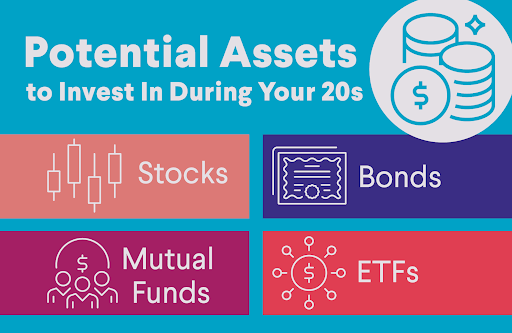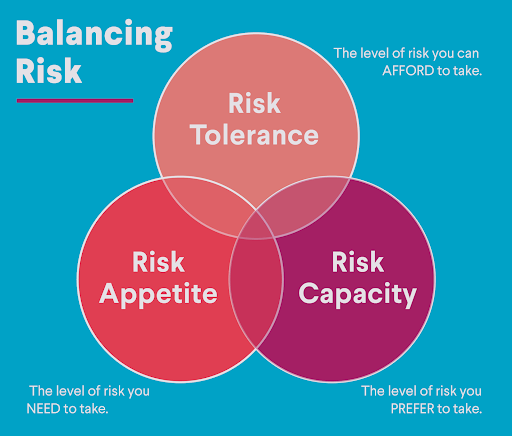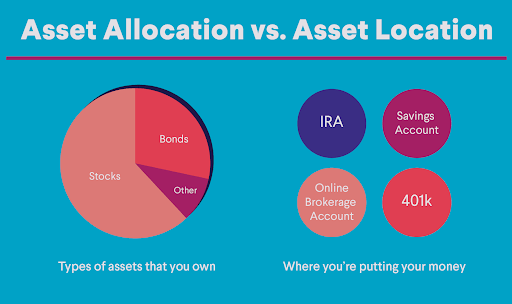Return on Education for Bachelor’s Degrees
A college education is an investment in the future. But as with any investment, it’s important to consider what you’ll get in return — your ROI — to determine if the cost is worth it. And so college students and their parents are weighing the cost of college against future earning potential, as well as intangibles like friendships, network building, and soft skills.
This guide explores the “return on education” for bachelor’s degrees, and offers insights into how to maximize the value of your college education.
Key Points
• Satisfactory Academic Progress (SAP) refers to the minimum academic requirements that must be met to maintain eligibility for financial aid in college.
• Each institution establishes its own SAP policy, typically requiring a minimum GPA of 2.0 and completion of 67% of attempted credits.
• Students who fail to meet SAP standards may face a financial aid warning, and continued non-compliance can lead to loss of federal assistance.
• An appeal process exists for students who encounter extenuating circumstances affecting their academic performance, such as illness or family emergencies.
• Maintaining SAP is crucial to avoid financial burdens, as students may need to pay tuition and expenses out-of-pocket without federal aid.
Average Cost of a Degree
Choosing the right college is a multifaceted decision. Considerations include where the school is located, whether it has programs that meet your interests, what student culture is like, and of course price.
The price tag for college can be jaw dropping. The average cost of college for an in-state student attending a four-year university is $27,146 per year (including living expenses). Students that attend private, nonprofit universities spend an average of $58,628 per year living on campus.
💡 Quick Tip: Fund your education with a low-rate, no-fee SoFi private student loan that covers all school-certified costs.
Return on Investment by Education Level
You can determine your ROI by education level by looking at the ratio of the cost of your degree to your expected income once you graduate. Your return on education is much like a traditional ROI calculation, which looks at the ratio between net profit and cost from investing resources.
In this case, time and money are the resources you’re investing, and your future income is the profit. The ROI for your education will depend largely on how much you spend on your schooling, what type of job you get after school, and to a certain extent what you major in.
Median 40-year ROI for a College Degree, per Education Data Initiative
|
Education Level |
20-year ROI |
40-year ROI |
|
Associate Degree |
363.5% |
1,200.8% |
|
Bachelor’s Degree |
38.1% |
287.7% |
|
Master’s Degree |
90.1% |
433.5% |
|
Doctoral Degree |
84.0% |
416.3% |
|
Professional Degree |
60.4% |
350.1% |
Associate Degree Return on Investment
Associate degrees can typically be completed in one to two years and often at a community college, which can make them more affordable than four-year degrees. According to data from the Education Data Initiative, the ROI for an associate degree is 363.5% after 20 years.
Bachelor’s Degree Return on Investment
Bachelor’s degrees typically take students four years to complete. According to Education Data Initiative, the ROI for a bachelor’s degree is 38.1% after 20 years. Keep in mind, though, that this estimated return on investment can vary greatly based on the major you pursue. For example, computer science degrees offer an ROI of 716.6%.
Master’s Degree Return on Investment
A master’s degree can be completed after a student receives their bachelor’s degree. This degree allows the student to specialize in a specific area of interest, such as those who pursue a Master in Business Administration, or MBA. The ROI for a master’s degree is 90.1% after 20 years, according to Education Data Initiative.
Doctoral Degree Return on Investment
A doctoral degree is generally the most advanced degree one can get in a particular field. Doctorates can take up to eight years to complete, though the exact timing will vary depending on factors like the program type, structure, and research being completed by the doctoral candidate. The estimated ROI for doctorate degrees is 84.0% after 20 years, according to Education Data Initiative.
Professional Degree Return on Investment
Professional degrees are advanced degrees that prepare a student to work in a particular field, such as law or pharmacy. After 20 years, the ROI for a professional degree is 60.4%, according to Education Data Initiative.
Highest Earning Degrees
The return on education will vary depending on the degree program you choose. For example, a student with a computer science degree may earn more than an English major. There are exceptions, but it’s a good idea to understand the norm for particular fields. These are some of the highest-earning degree programs.
Associate Degree
As mentioned, an associate degree takes about two years to complete and can often be finished at a community college for significantly less than it may cost to get a four-year degree. Associate degrees often allow students to specialize in a specific trade or field, and in some cases, this specialization can lead to a high-earning career.
One of the top-earning post-associate degrees is air traffic controllers. According to the Bureau of Labor Statistics (BLS), air traffic controllers earn a median income of $137,380.
Dental hygienists, MRI technicians, and funeral service managers all earn an average salary of $70,000 or higher, making them top associate degrees based on earning potential, as well.
Bachelor’s Degree
According to Best Colleges, some of the bachelor’s degrees with the highest earning potential include chemical engineering, computer engineering, computer science, finance, and business analytics.
For example, in 2023, chemical engineers earned a median salary of $112,100. Financial analysts earned a median salary of $99,890 per year, according to the BLS.
Certifications
Some people may consider adding a certification to their resume in order to boost their earning potential. Professional organizations often award certifications for specific skill sets. Some top earning and in-demand certifications include those for project management and data engineering.
Recommended: Guide to Student Loans for Certificate Programs
Bachelor’s Degree ROI by Major
The ROI can vary quite a bit based on the type of bachelor degree pursued. As mentioned, computer science degrees have some of the best ROI for bachelor’s degrees — about 716.6% over 40 years, according to Education Data Initiative. Take a look below at a list of majors and their estimated ROI after 40 years, according to Education Data Initiative:
• Business finance — 710.2%
• Business accounting — 547.2%
• Electrical engineering — 517.8%
• Biology — 225.0%
• Communications — 209.3%
• Architecture — 188.6%
• Fine Art — 70.5%
Consider What Can’t Be Measured by Money
Yes, going to college or pursuing other higher education opportunities can be expensive. But in addition to the cost and potential boost in earning potential, there are a variety of intangible benefits that can’t be measured by a dollar. For example, college students living on campus are gaining a newfound independence and developing life skills they’ll carry with them.
Plus, many colleges have strong alumni networks that can help when a student is looking for a job post-grad. Students have the chance to not only get to know themselves better, but in the process they may make lifelong friends.
Recommended: How to Budget as a College Student
Controlling Costs
One way to improve ROI is to lower the amount of money you are paying for school. This could be particularly useful if you already know you want to pursue a career in a relatively low paying field.
Scholarships
You can help offset the cost of tuition by looking for scholarship programs that help pay your tuition and other college expenses. Many schools offer need-based financial aid to families who might otherwise struggle to pay tuition costs. In some cases, you could even get a full ride.
You can find scholarships by looking at your school’s financial aid website, connecting with your guidance counselor, or reviewing databases or online scholarship search tools.
In some cases, you may be able to apply for unclaimed scholarships to help supplement the aid you have already received.
Grants
Students may qualify for grants directly from their school or through federal financial aid. Grants typically do not require repayment, so they can be an incredibly helpful addition to a student’s financial toolkit when it comes to paying for college. Pell Grants are one type of grant awarded by the federal government to students who demonstrate exceptional financial need.
Pell Grants are available to undergraduate students. In order to maintain eligibility for a Pell Grant, undergrads will also be required to meet satisfactory academic progress requirements.
Student Loan Forgiveness Programs
If you need to take out student loans to help pay for college, keep an eye on your terms and interest rates to help keep costs down. If you take out federal loans and plan to work for certain non-profits or government organizations, you may be eligible for loan forgiveness under the Public Service Loan Forgiveness (PSLF) program. After making 10 years’ worth of qualifying monthly payments, the remaining balance of your loan may be forgiven through this program.
Private Student Loans
Private student loans don’t qualify for federal benefits like PSLF, but they can be helpful tools for students who have exhausted their federal financial aid.
If you are interested in paying for college or another higher education degree with a private student loan, take the time to shop around and review interest rates, terms, and other fees or benefits offered by lenders.
Employer Support After Graduation
Finally, some employers may also help you pay back your student loans as part of a benefits package. Consider working for an employer who offers these benefits.
Recommended: Finding Jobs That Pay Off Student Loans
The Takeaway
College students can estimate the return on their educational investment by looking at how much they’ll pay for their degree and comparing it to their lifetime earnings. Though important, the money you’ll eventually earn isn’t the only thing you should consider when choosing a college. Getting a bachelor’s degree can help you acquire skills and expand your horizons in ways that aren’t directly related to your degree or job prospects.
When you decide on the right school for you, take the time to consider all your options — including scholarships, grants, federal and private student loans, post-graduation repayment programs, and other sources of public and private funding — to help you achieve your education and career goals.
If you’ve exhausted all federal student aid options, no-fee private student loans from SoFi can help you pay for school. The online application process is easy, and you can see rates and terms in just minutes. Repayment plans are flexible, so you can find an option that works for your financial plan and budget.
FAQ
What is the average return on investment for a college degree?
The average return on investment (ROI) for a college degree varies by field, but generally, bachelor’s degree holders earn significantly more over their lifetime than those with only a high school diploma. On average, the ROI for a college degree ranges from 9% to 10%, but can be higher depending on the major and institution.
Which degree has the highest return on investment?
Degrees in fields like engineering, computer science, and technology typically have the highest return on investment (ROI). These degrees often lead to high-paying jobs with strong job security and growth prospects, resulting in a significant lifetime earning advantage compared to the cost of education, making them highly valuable investments.
Is a bachelor’s degree a good investment?
A bachelor’s degree is generally a good investment as it can lead to higher lifetime earnings, greater job stability, and more career opportunities compared to having only a high school diploma. However, the return on investment depends on the chosen field, the cost of education, and individual career goals and outcomes.
SoFi Private Student Loans
Terms and Conditions Apply. SOFI RESERVES THE RIGHT TO MODIFY OR DISCONTINUE PRODUCTS AND BENEFITS AT ANY TIME WITHOUT NOTICE. SoFi Private Student loans are subject to program terms and restrictions, such as completion of a loan application and self-certification form, verification of application information, the student's at least half-time enrollment in a degree program at a SoFi-participating school, and, if applicable, a co-signer. In addition, borrowers must be U.S. citizens or other eligible status, be residing in the U.S., and must meet SoFi’s underwriting requirements, including verification of sufficient income to support your ability to repay. Minimum loan amount is $1,000. See SoFi.com/eligibility for more information. Lowest rates reserved for the most creditworthy borrowers. SoFi reserves the right to modify eligibility criteria at any time. This information is subject to change. This information is current as of 04/24/2024 and is subject to change. SoFi Private Student loans are originated by SoFi Bank, N.A. Member FDIC. NMLS #696891. (www.nmlsconsumeraccess.org).
Please borrow responsibly. SoFi Private Student loans are not a substitute for federal loans, grants, and work-study programs. We encourage you to evaluate all your federal student aid options before you consider any private loans, including ours. Read our FAQs.
SoFi Loan Products
SoFi loans are originated by SoFi Bank, N.A., NMLS #696891 (Member FDIC). For additional product-specific legal and licensing information, see SoFi.com/legal. Equal Housing Lender.
Financial Tips & Strategies: The tips provided on this website are of a general nature and do not take into account your specific objectives, financial situation, and needs. You should always consider their appropriateness given your own circumstances.
External Websites: The information and analysis provided through hyperlinks to third-party websites, while believed to be accurate, cannot be guaranteed by SoFi. Links are provided for informational purposes and should not be viewed as an endorsement.
SOISL-Q324-052
Read more







